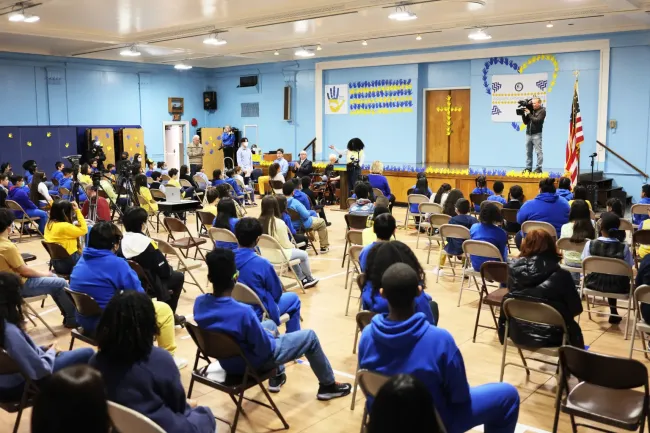Crisis in NYC's Catholic Schools: A Wave of Closures and the Fight for Survival
New York City’s Catholic school system, once a cornerstone of urban education, is now facing an unprecedented crisis. Recent announcements of permanent school closures by summer 2025 mark a rapid decline that began during the pandemic. This article examines the underlying factors, community impact, and potential paths forward for a system in distress.
II. Overview of the Crisis
- Recent Closures:
Several Catholic schools have declared permanent closures, adding to a growing trend since the pandemic. - Enrollment Decline:
Over the past five years, enrollment has dropped by tens of thousands, drastically reducing the system's footprint compared to its 2020 peak. - Geographic Impact:
The Bronx, in particular, has seen a disproportionate number of closures, reflecting deep-seated enrollment declines in historically vibrant Catholic communities.
III. Key Contributing Factors
A. Escalating Tuition and Financial Strain
- Rising Costs:
- High Schools: Tuition now reaches up to $16,000 per year, a steep increase from just a few years ago.
- Elementary Schools: Average tuition stands around $4,000 annually.
- Double Financial Burden:
- Families are not only taxed for public education but also face high tuition costs for Catholic schools.
- The absence of state-funded vouchers leaves many households struggling to afford faith-based education.
B. Decline in Religious Affiliation
- Weakened Parish Ties:
- Changing societal norms have eroded the strong community bonds traditionally fostered by parish affiliations.
- Nationwide Trend:
- A broader decline in religious adherence has led to reduced demand for faith-based educational institutions.
C. Infrastructure and Legacy Costs
- Aging Facilities:
- Many Catholic schools operate in buildings that are over a century old, now in desperate need of renovation.
- Financial Deficits:
- The high cost of modernization, combined with declining enrollment, has resulted in significant financial deficits despite efforts to modernize (e.g., transitioning to co-educational models).
IV. Case Study: The Bronx
- Historical Significance:
The Bronx has long served as a hub for working-class Catholic families, with schools known for their college-preparatory programs and service to marginalized communities. - Concentrated Impact:
Recent closures in the borough underscore the severe enrollment declines and financial challenges faced by institutions that have been pillars of their communities. - Competitive Pressures:
Increased competition from free public charter schools has further accelerated the decline in student numbers and financial viability.
V. Transition to Charter Schools: A Controversial Pivot
- Partnerships with the Archdiocese:
- In response to closures, the Archdiocese has partnered with charter school networks to repurpose former Catholic school buildings.
- Maintaining Educational Access:
- This transition ensures that educational services continue, albeit under a different model.
- Mission Concerns:
- Critics argue that operating as charter schools dilutes the faith-based mission and traditions that once defined these institutions.
- Student Transition Process:
- Current students are given lottery preference for charter admissions, yet families still face challenges when transferring to other Catholic schools.
VI. Broader Implications and Policy Considerations
A. Community Impact
- Loss of Community Anchors:
The closures risk eroding long-standing community networks and social cohesion, particularly in areas that have relied on these schools for generations.
B. Policy and Funding Challenges
- Advocacy for Vouchers:
Proponents of school choice argue that vouchers could ease financial burdens, but resistance from New York legislators has stalled such reforms. - Policy Inertia:
The current educational policy framework has not kept pace with the evolving needs of both families and institutions.
C. Innovative Adaptation Strategies
- Grade Expansion:
Some schools have introduced middle school grades to absorb students from shuttered institutions, showcasing an adaptive approach to survival amid crisis.
VII. Conclusion: A Crossroads for Catholic Education
The wave of closures in NYC's Catholic schools is symptomatic of broader systemic challenges: rising costs, declining religious affiliation, aging infrastructure, and stalled policy reforms. While partnerships with charter schools and innovative program expansions represent pragmatic steps toward survival, the future of Catholic education in New York City will hinge on:
- Affordability: Addressing the steep tuition costs and financial burdens on families.
- Community Engagement: Reinvigorating the traditional ties that have long supported faith-based education.
- Legislative Action: Implementing policies that offer sustainable support for these institutions.
Ultimately, whether these measures lead to a renaissance or further decline will depend on the collective ability to navigate and resolve these complex challenges.
